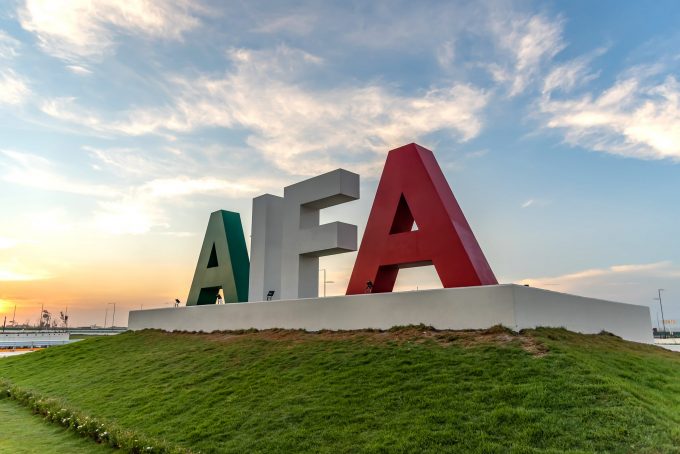Europe's logistics operators tighten security after alert by UK counter-terror services
Details are emerging of an investigation by counter-terrorism police into a fire at a DHL ...
GM: RAISING THE ROOF GGM: IN FULL THROTTLE GZIM: MAERSK BOOST KNIN: READ-ACROSSMAERSK: NOT ENOUGHMAERSK: GUIDANCE UPGRADEZIM: ROLLERCOASTERCAT: HEAVY DUTYMAERSK: CATCHING UP PG: DESTOCKING PATTERNSPG: HEALTH CHECKWTC: THE FALLGXO: DEFENSIVE FWRD: RALLYING ON TAKEOVER TALKODFL: STEADY YIELDVW: NEW MODEL NEEDEDWTC: TAKING PROFIT
GM: RAISING THE ROOF GGM: IN FULL THROTTLE GZIM: MAERSK BOOST KNIN: READ-ACROSSMAERSK: NOT ENOUGHMAERSK: GUIDANCE UPGRADEZIM: ROLLERCOASTERCAT: HEAVY DUTYMAERSK: CATCHING UP PG: DESTOCKING PATTERNSPG: HEALTH CHECKWTC: THE FALLGXO: DEFENSIVE FWRD: RALLYING ON TAKEOVER TALKODFL: STEADY YIELDVW: NEW MODEL NEEDEDWTC: TAKING PROFIT

For an airport that is supposed to be bowing out of the cargo business, Benito Juárez (AICM), the chief gateway for the Mexican capital, is doing remarkably well.
The chronically congested airport clocked up 10% growth in cargo volume in the first half of the year over the same period in 2022.
Throughput reached 294,603 tons, driven by an 11.5% surge in international volumes, whereas domestic traffic expanded by a more modest 1.7%, to 42,996 tons.
AICM was supposed to see a contraction in freight traffic after the Mexican government decreed in January that freighter operations should migrate to other airports around the Mexican capital to alleviate AICM’s chronic congestion. It was one of the 20 busiest airports on the globe last year in terms of passenger numbers.
However, the argument rang hollow, given that most freighter operations happened at night, when passenger flight numbers was not an issue. All-cargo carriers protested about the abrupt mandate, pointing to outstanding certification issues and shortages of customs brokers and agents at Felipe Angeles International Airport (AIFA), portrayed by the authorities as the most likely alternative for freighter airlines.
Having initially set a 90-day window for freighter operations to migrate, the authorities extended the deadline to 1 September.
By now, most of the major carriers have either moved or signalled their intention to do so. They include Lufthansa and Air France KLM, the only carriers that have their own ground handling operations at AICM, and DHL, the first to make the move, shifting its flights in March, having constructed a new $55m terminal at AIFA.
The integrator’s three daily flights were the main reason for a surge in cargo throughput that catapulted AIFA into the top ten cargo airports in Mexico. It handled 3,774 tons in the first four months of the year, up from 0.5 tons a year earlier.
Interestingly, Guadalajara and Monterrey, which ranked second and third in the Mexican airfreight gateway hierarchy, behind AICM, registered contractions of 1.5% and 6.2% respectively in cargo volumes. Querétaro, which ranks fourth, posted a gain of 11.4%.
The growth in international airfreight flows reflects Mexico’s appeal as a leading candidate for production or supplier bases near the US market, as companies look to reduce their reliance on sourcing from China. The KPMI Supply Chain Stability Index for the first quarter, published by the Association for Supply Chain Management, shows Mexico overtook China as the main source of US imports by 15%.
In May, Mexico’s exports were up 5.8%, year on year. The value of non-oil shipments to the US rose 11.4% that month.
US-based logistics providers like Redwood Logistics and BlueGrace Logistics are expanding their presence in Mexico in anticipation of strong growth in cross-border flows in the years ahead.
“We see a lot of customers either build or expand in Mexico,” said Redwood CEO Mark Yeager.
Most of the original concerns airlines voiced regarding AIFA have been addressed, but challenges remain. Mexican all-cargo carrier mas delayed moving its flights to the airport until 27 July to give forwarders time to register at AIFA. Without registration, they are not able to access the airport, so carriers have to move freight on the ground to AICM for pick-ups. Lufthansa has started a nightly shuttle to move freight between the two airports.
Cargo volumes at AIFA should show marked increases this month and next. How far this will dent throughput at the bigger gateway for the Mexican capital remains to be seen. But it is doubtful that passenger operators will see a significant improvement in the congestion at AICM.
Comment on this article